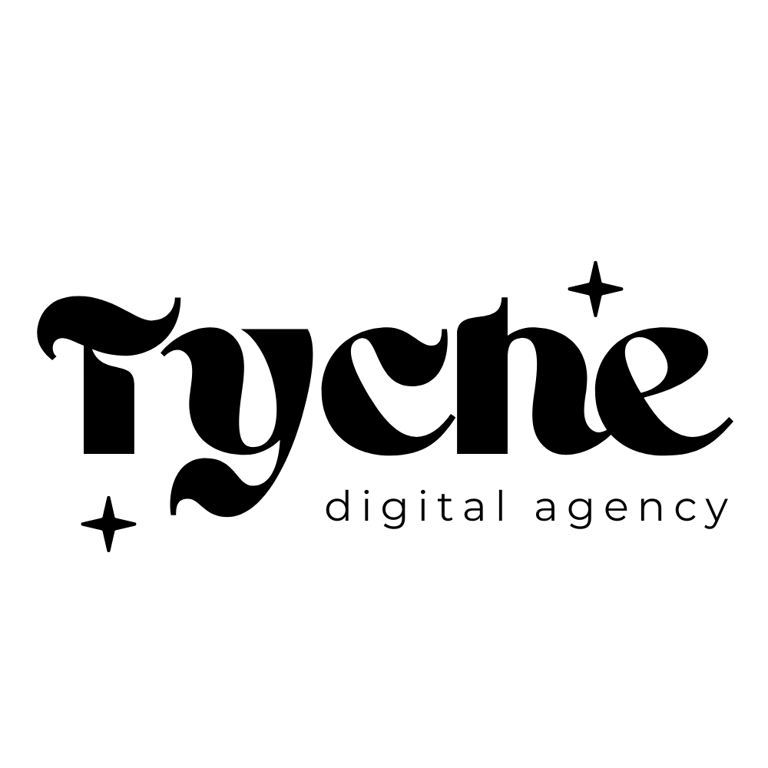How to Audit Your Q3 Offers Before They Sabotage Your Revenue Goals
The uncomfortable truth about why your beautiful offers aren't converting, and the strategic recalibration that changes everything.
Veronica Dietz
6/30/20257 min read


How to Audit Your Q3 Offers Before They Sabotage Your Revenue Goals
The uncomfortable truth about why your beautiful offers aren't converting and the strategic recalibration that changes everything.
It's July. You're staring at your revenue goals for the year, doing the math on what needs to happen in Q3 and Q4 to hit your targets. The numbers feel... ambitious. Maybe impossible.
Here's what I see happening in the entrepreneurial world right now: brilliant women with gorgeous brands, compelling messaging, and offers that look stunning on paper but their bank accounts tell a different story.
The question isn't whether you're talented enough to hit your revenue goals. You are. The question is whether your offers are strategically designed to get you there.
Most entrepreneurs approach Q3 with the same offers that got them here, expecting different results. They add more marketing, more content, more energy without asking the fundamental question that determines everything: Are my offers actually aligned with what my market wants to buy?
This isn't about working harder. It's about working aligned. And alignment, as I always say, isn't a buzzword. It's your competitive advantage.
The Hidden Revenue Killers in Your Offer Suite
Before we talk about what makes an offer irresistible, let's address what makes an offer invisible even when it's beautifully packaged and powerfully positioned.
1. The Clarity Gap
Your offer might be crystal clear to you, but what about to your ideal client? I see this constantly: entrepreneurs who can articulate their transformation in their sleep, but their sales pages read like riddles.
Here's the test: Can someone who's never heard of you land on your offer and understand within 10 seconds exactly what they're buying and why they need it?
If you're hedging, explaining, or using industry jargon that requires translation, you've lost them. Clarity converts. Confusion costs.
2. The Value-to-Investment Mismatch
This isn't about pricing too high or too low. It's about energetic alignment between what you're asking for and what you're delivering.
I worked with a client who had a $5,000 program that felt "expensive" to her ideal clients not because of the price, but because the transformation promised didn't feel proportional to the investment required. We didn't change the price. We recalibrated the promise, restructured the delivery, and suddenly the same investment felt like a steal.
The market will pay premium prices for premium transformation. But they won't pay premium prices for unclear outcomes or generic solutions.
3. The Positioning Problem
Your offer exists in a market, not a vacuum. If you've created something beautiful but positioned it against the wrong alternatives, it won't matter how perfect your messaging is.
Ask yourself: What is your ideal client comparing your offer to? Other programs in your industry? Doing nothing? Hiring someone else entirely? Your positioning must account for this comparison and win it.
The Strategic Offer Audit: 5 Questions That Reveal Everything
When I work with clients on offer optimization, we don't start with tactics. We start with truth. These five questions will reveal whether your Q3 offers are revenue-ready or need strategic recalibration.
Question 1: "What problem does this solve that keeps my ideal client awake at 3 AM?"
Surface-level problems get surface-level investment. Deep problems get deep pockets.
Your offer needs to address the thing your ideal client thinks about in quiet moments the frustration that gnaws at them, the gap between where they are and where they desperately want to be.
If your offer solves a "nice to have" problem, you're competing for discretionary spending. If it solves a "need to have" problem, you're competing for necessary investment. There's a difference in urgency, and urgency drives decision-making.
Question 2: "What transformation can I guarantee after working with me?"
Notice I didn't ask what transformation you hope to create or what's possible. I asked what you can guarantee.
Your offers need to be built on outcomes you've delivered consistently, not aspirations you're still figuring out. This isn't about limiting your vision it's about grounding your promises in proven results.
When you can stand behind your transformation with complete confidence, that energy translates into everything: your sales conversations, your marketing, your pricing. Confidence is magnetic. Uncertainty is repelling.
Question 3: "Who is this NOT for?"
Weak offers try to be everything to everyone. Strong offers have clear boundaries.
The most magnetic thing you can do is tell someone exactly who shouldn't buy from you. This accomplishes two things: it makes the right people feel chosen, and it prevents the wrong people from becoming difficult clients.
Your ideal client doesn't want to be part of a generic group. They want to be part of an exclusive group of people just like them, with challenges just like theirs, seeking transformation just like what they're after.
Question 4: "What would happen if they did nothing?"
This is where urgency lives. Not manufactured scarcity real consequences.
If your ideal client doesn't invest in transformation now, what does their life look like in six months? A year? Three years?
This isn't about fear-mongering. It's about reality-checking. Change requires energy, and energy requires motivation. Help them see what staying stuck actually costs.
Question 5: "What makes THIS offer different from everything else they could choose?"
Here's where most entrepreneurs get stuck. They think their unique value proposition needs to be completely original. It doesn't. It needs to be completely relevant.
Your differentiator isn't about what no one else offers. It's about what no one else offers to them, for this specific challenge, in this particular way.
Maybe it's your background. Maybe it's your methodology. Maybe it's your guarantee or your timeline or your delivery style. The market doesn't need something that's never existed. It needs something that's never existed for them.
The Anatomy of Revenue-Ready Offers
Once you've audited your current offers, it's time to optimize them for Q3 success. Revenue-ready offers share specific characteristics that make them irresistible to ideal clients and profitable for you.
Clear Entry and Exit Points
Your ideal client needs to know exactly where they're starting and where they'll end up. Vague transformation promises like "become your best self" or "grow your business" don't create buying decisions. Specific outcomes do.
Instead of "transform your business," try "increase your revenue by 40% while working 20% fewer hours." Instead of "find your purpose," try "identify and launch your signature program within 90 days."
The more specific your promise, the easier it becomes for someone to say yes because they can envision exactly what they're buying.
Strategic Price Points
Pricing isn't about what you think you're worth or what your competitors charge. It's about the intersection of perceived value, market demand, and your capacity to deliver.
Your price should feel like a stretch for your ideal client not impossible, but significant enough that they take the transformation seriously. Investment creates commitment. Commitment creates results.
If your offers feel "cheap" to ideal clients, you're either undervaluing the transformation or attracting the wrong market. If they feel "expensive," you're either over-promising or under-demonstrating value.
Built-in Success Factors
The best offers don't just promise transformation they include everything necessary to make that transformation inevitable.
This means considering not just what you'll teach, but how you'll teach it. Not just what they'll learn, but how you'll support them through the learning. Not just the destination, but the entire journey.
When someone invests in your offer, they should feel confident that success isn't just possible it's probable.
The Q3 Revenue Reality Check
Now for the uncomfortable question: If you continue with your current offers, at your current conversion rates, with your current pricing, will you hit your revenue goals?
The math doesn't lie. If the answer is no, you have three options:
Increase volume (more leads, more launches, more activity)
Increase conversion (better messaging, stronger offers, clearer positioning)
Increase value (premium pricing, elevated transformation, exclusive access)
Most entrepreneurs default to option 1 because it feels like the safest path. More activity equals more results, right?
Wrong. More activity equals more exhaustion. More conversion and more value equal more revenue.
The Strategic Path Forward
Here's what I want you to do right now, before you read another blog post or create another piece of content:
Audit your current offers against the five questions above. Be ruthlessly honest. If an offer doesn't pass all five tests, it's not ready for prime time.
Calculate your numbers. How many sales do you need at your current price points to hit your Q3 goals? Is that realistic given your current conversion rates and lead flow?
Identify your strongest offer. Which one consistently delivers transformation? Which one do clients rave about? Which one feels energetically aligned with who you're becoming?
Optimize ruthlessly. Sometimes this means raising prices. Sometimes it means narrowing focus. Sometimes it means completely repositioning. Always it means choosing clarity over comfort.
The entrepreneurs who thrive in Q3 aren't the ones with the most offers. They're the ones with the most aligned offers.
Your Next Strategic Move
If this audit revealed gaps in your offer suite if you're realizing that beautiful packaging isn't enough to drive revenue you're not alone. Most visionary entrepreneurs create from inspiration, not strategy. The magic happens when both come together.
This is exactly why I created The Foundation Accelerator: 90 days of strategic mentorship designed to help you elevate your offers, clarify your message, and build the systems that let your brand scale beautifully.
Not just guidance. Direction, structure, and momentum.
Because here's what I know to be true: You don't need more offers. You need better offers. You don't need more marketing. You need clearer positioning. You don't need to work harder. You need to work more aligned.
Your Q3 revenue goals aren't just numbers on a spreadsheet. They're the bridge between where you are and where you're meant to be. But bridges require strong foundations.
The question isn't whether you're capable of hitting your goals. You are.
The question is whether your offers are strategically designed to get you there.
Ready to find out?
If you're ready to audit and optimize your offers for Q3 success, The Foundation Accelerator applications are open. This isn't about adding more to your plate it's about making what's on your plate actually nourishing.






